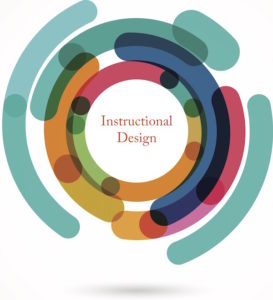5 Instructional Design Principles
 Sound knowledge of Instructional Design (ID) principles will impact and inform strategies for eLearning in your cannabis business. eLearning seeks to create experiences for modern learners who want cannabis training contents that are relevant, mobile, personalized, and self-paced.
Sound knowledge of Instructional Design (ID) principles will impact and inform strategies for eLearning in your cannabis business. eLearning seeks to create experiences for modern learners who want cannabis training contents that are relevant, mobile, personalized, and self-paced.
Primarily, a successful eLearning development is engaging, motivational, memorable, and easy to digest. This success, however, is mostly powered by what is known as Instructional Design. The Instructional Designer plays a crucial role in creating experiences that are both engaging and applicable to real life.
Before we explore the Instructional Design principles, let’s take a look at the meaning of Instructional Design.
What Is Instructional Design?
Instructional Design is the creation of learning experiences and materials in a manner that results in the acquisition and application of knowledge and skills. The discipline follows a system of assessing needs, designing a process, developing materials, and evaluating their effectiveness.
In the context of workplace learning, Instructional Design provides a practical and systematic process for effectively designing effective cannabis industry training.
Principles Of Instructional Design
 According to Robert M. Gagne, there are nine (9) important Instructional Design events for developing a powerful learning process.
According to Robert M. Gagne, there are nine (9) important Instructional Design events for developing a powerful learning process.
Our experienced Instructional Designer team, they have come across varied learning needs and voluminous cannabis industry content that demands a great level of analytical thinking, creativity, flexibility, and the ability to manage information, especially in the face of tight deadlines. During this period, they found out that five (5) out of the nine (9) principles are indispensable.
1. Gain Attention
Grabbing attention involves taking a deliberate effort to ensure reception. It is a first impression strategy that can determine the level of participation by the learner. For instance, gaining attention arouses the learner’s curiosity and sets an expectation in the mind of the learner.
Practical ways of doing this include: throwing a challenge, sharing surprising facts, presenting a problem to be solved, or telling a story that resonates with the learners.
2. Tell Learners The Learning Objective
 Informing the learners of the cannabis training objectives is an instructional strategy that gets them involved in the learning process.
Informing the learners of the cannabis training objectives is an instructional strategy that gets them involved in the learning process.
Telling the learners what they will be able to do after participation, will help them to organize their thoughts and focus their learning efforts.
If learners understand what you expect them to learn, they can better judge if they are successfully learning it.
3. Present Information
This is a principle that you practically cannot do without when developing an effective eLearning in the cannabis industry. Before coming across this principle, we always asked ourselves this question when working on Instructional Design – what is the best way to represent this information in a way that is interactive and easy?
This is an instructional mindset that opens up spaces for creative thinking. Storytelling, branching scenarios, role-plays, gamification, and interactive videos are methods you can apply but in alignment with the learning objectives and desired outcome. Remember to break information into chunks to avoid cognitive overload.
4. Assess Performance
 This principle assists learners to think about the information they have covered.
This principle assists learners to think about the information they have covered.
Note that the feedback on the right or wrong answer should be centered on reinforcing learning. To make your assessments interactive and engaging, use learning games, word puzzles, drag-and-drop interactions, flashcards, or scenario activities.
You can choose to give your learners a second chance to attempt the assessment depending on the learning objectives.
5. Provide Feedback
Giving specific and informative feedback on learners’ performance is a must. Well-formulated feedback will provide perspectives that will impact learning assumptions. Don’t just stick to “Correct and Incorrect” as the title of the feedback.
Try using other adjectives that are relatable or customized to the theme of the marijuana industry training to enrich their learning experience. To execute an effective eLearning project, be sure to get your learners involved throughout the course. Be flexible, keep things simple, and think of design in a way that connects with your learners.
Above all, have an instructional mindset that learning must indeed take place.
Let us know what you think.




Responses